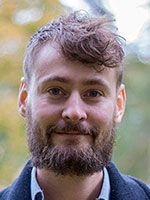Press release -
Unique chance to change into pro-environmental behaviour in new urban environments
Much of our unsustainable behaviour is strongly habit driven, for example our eating habits, how we consume goods and services, and our travelling, such as the commute to and from work. Evolutionarily, there are a thousand reasons why we develop habits. For example, it frees up working memory, allows us to save time and gives us the ability to multitask.
Humans now find themselves in a world so full of information that we in fact need tools to navigate and manage. Developing habits is here a fundamental prerequisite for success. The problem arises when we want to get rid habits we have created earlier.
“Incredibly hard to break habits in the environment where they were cemented"

“Major behavioural changes are needed to build a sustainable future, but much of our behaviour is guided by the choices we once made, and it is incredibly hard to break habits in the environment where they've been cemented,” Noah Linder says.
It is estimated that we will build new urban environments for 2.5 billion people between 2010-2050 and it is crucial that these environments promote the behaviours we want to see as a society.
“Research clearly shows that we establish habits in environments that we often find ourselves in; it also shows that it is easier for us to change in new environments. The reason why is that in the environments our habits were established, there are many triggers that automatically activate habits and we do not reflect on that process. However, in new environments we are free of many of these triggers.
“Most of us may have experienced that it can be easier to make a restart after a move, when we're travelling or starting a new job. Moreover, few would try to cure someone of a serious addiction without first removing that individual from home. We need to harness that knowledge about how to break habits.”
Designing an environment to promote certain habits
In Copenhagen, a cycling revolution has taken place. Copenhagen used to be a car-dominated city, but now 50% of all transport is by bicycle. The city made it a lot easier for cyclists by building clearly visible cycle lanes that were allowed to take a great deal of space on the road so that riding a bicycle would feel safe.
Arguably, what primarily promoted cycling was the major physical changes that showed what behavioural changes the city wanted.
Successful bans
In Sweden and London, smoking was banned in bars, and studies have shown that those bans affected people’s views on smoking. According to Noah Linder, the most important finding was that norms and perceptions of how harmful smoking is were changed.
“So many people were against the ban, but after changing their behaviour, their perception of smoking changed, and, to them, the perceived risk of smoking increased. The congestion charge in Stockholm is another example. Although many were critical at the beginning, opinions changed and were later in favour of the decision.
“Changing people’s attitudes and values is incredibly hard. Today, mental and digital filters make it almost impossible to get through to people with information and education. Promoting pro-environmental lifestyles changes by designing or modifying the physical environment is an underestimated tool, we think,” Noah Linder says.
Scientific article in Ambio
------------
Noah Linder, researcher in environmental psychology at Urban Studio, University of Gävle. Högskolan i Gävle
Phone: 073-724 05 08
E-mail: noah.linder@hig.se
Research presentation
More about the strategic research area Urban Sustainability at the University of Gävle
Text: Douglas Öhrbom
Photo: News Øresund – Johan Wessman
Photo: Noah Linder: Anna Sällberg
Topics
- Energy issues
Categories
- behavioral science
- sustainable development
- university of gävle
- research
- sustainable cities
- sustainable living environment
- urban studio
- environmental psychology
- habit research
- noah linder
Education and Research at a Scenic Campus.
The University of Gävle has approximately 17 000 students, more than 50 study programmes and second-cycle programmes, about 1 000 courses in humanities, social and natural sciences and technology.
Research Profiles
Built Environment and Health-promoting Working Life are the general research profiles of the higher education institution. Important parts included are Spatial Planning with a specialisation in Sustainable Built Environment and Musculoskeletal Disorders with the purpose to prevent work-related injuries. In 2010, the higher education institution received permission to carry out third-cycle programmes in the profile area of Built Environment.
The higher education institution has applied for permission to carry out third-cycle programmes in technology, humanities and social sciences.
